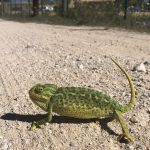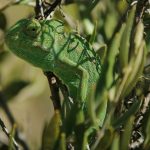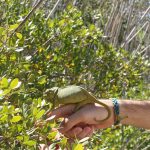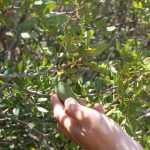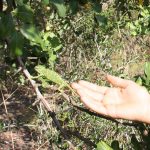OUR CAUSES
CHAMELEON (CHAMAELEO CHAMAELEON)
In asunim we believe in a future world defined by a decentralized logic covering all aspects of our existence, from information, power, food and industrial production to finance. We also need to fight hard to find a positive interdependency with our surrounding ecosystems. It is important to adapt to these urgent and necessary changes quickly over the coming years to maintain a stable and hospitable planet for us to live on.
We have chosen the chameleon as a symbol for this change because of the fast color adaptation to its surroundings and its current threat of extinction due to human activity. We support a local portuguese animal protection RIAS agency who were so kind to provide us with the below information about this interesting animal.
Scientific name: Chamaeleo chamaeleon
Common name: Mediterranean or Common chameleon
Class: Reptilia
Order: Squamata
Suborder: Sauria
Family: Chamaeleontidae
Etymology: The name chameleon (also chamaeleon) means “ground lion” and derives from the Greek words khamai (on the earth, on the ground) and leon (lion).
Feeding behaviour: The chameleon is a natural born hunter. It uses its quick, long and sticky tongue to capture its prey.
It generally feeds on flying insects and other small invertebrates.
Description: The common chameleon is recognisable for its flattened body and a helmet-shaped protrusion on its head. It has big eyes that move independently of each other in a 180-degree field of vision, allowing them to look forward with one eye and backward with the other.
It has a prehensile tail and claws on its toes, which form a pincer shape ideal for grasping and moving along branches.
As there is no size difference between males and females, they are not easily distinguishable.
The skin is normally green or grey, with broken yellowish lines.
The ability to change colour is another main feature.This remarkable phenomenon is triggered by the surrounding temperature, location and above all mood and need to communicate.
Origin: The origin of the Chamaeleo chamaeleon (common chameleon) in the Iberian peninsula is disputed.
It is generally believed that the species was introduced in the 20th century with the migration of workers between the southern part of the peninsula and North Africa. Chameleons always aroused affection and acquired a certain magical aura among Mediterranean cultures.
Therefore it may have been carried across the Mediterranean as a pet, amulet or simply to control pests. However, genetic studies do not exclude the possibility of a natural colonization (less than 200,000 years old) or an ancient introduction.
Distribution: There are around eighty species of chameleons, mostly in Sub-Saharan Africa.
The common chameleon (Chamaeleo chamaeleon) can be found in most countries in North Africa, the Middle east, the Arabian Peninsula, continental Greece, Turkey, Aegean sea islands, Malta, Sicily and the Iberian Peninsula.
In Portugal, they can be found in the coastal areas of the Algarve, in the southern part of the country. They live in dunes and bushes as well as eucalyptus and pine trees but can also be found in very diverse places such as agricultural fields, vines, vegetable patches and gardens.
Reproduction: The common chameleon is a daytime animal. It is anoviparous species with only one reproductive cycle per year, which peaks in the Summer.
Most reach sexual maturity during their first year of life.The breeding period can occur from June to September. Males become more aggressive, engaging in a clear territorial behavior and imposing themselves in the area that they wish to dominate.
Females generally mate with only one male. Mating lasts about 2-3 minutes and can take place several times in one day.
After approximately 35 days, the female lays 4-40 eggs in a hole dug in sandy soil, usually near some bushes. Incubation lasts around 10 months.
During the winter they look for protection from the cold in trees.
Threats: Their main predators are birds, snakes, cats and other domestic animals, and, above all, humans, who destroy their habitat, run them over on roads and capture illegally, in general under terrible conditions.
Chameleons do not fare well in captivity and, as the wild animals that they are, they do not like to be handled.
The stress of capture, inadequate temperatures and nutritional imbalances contribute to a slow death in captivity.
Conservation: The chameleon population in Portugal is considered distinct and is afforded the same legal protection as other indigenous species.
The capture and sale of chameleons is prohibited in Portugal.
WHAT TO DO WHEN YOU FIND A WOUNDED WILD ANIMAL?
1 – Do your utmost to avoid disturbing the animal, and minimize noise, handling time and human contact;
2 – Use a towel or cloth to cover the animal’s head (this eliminates visual stimulation and keeps it calm) and put it in a cardboard box appropriate for its size, with small holes to allow air in. Be very careful with the snout, paws and tail to avoid injuries!
3 – Do not keep the animal more than strictly necessary and administer first-aid care only if you have the knowledge.
4 – Immediately contact:
SOS Ambiente e Território: 808 200 520
SEPNA-GNR – Nature and Environmental Protection
Email: sepna@gnr.pt
Or the nearest National Park or Protected Area.
© A cor do camaleão
CONTACT
- info[at]asunim.co
- +44 208 089 3704

